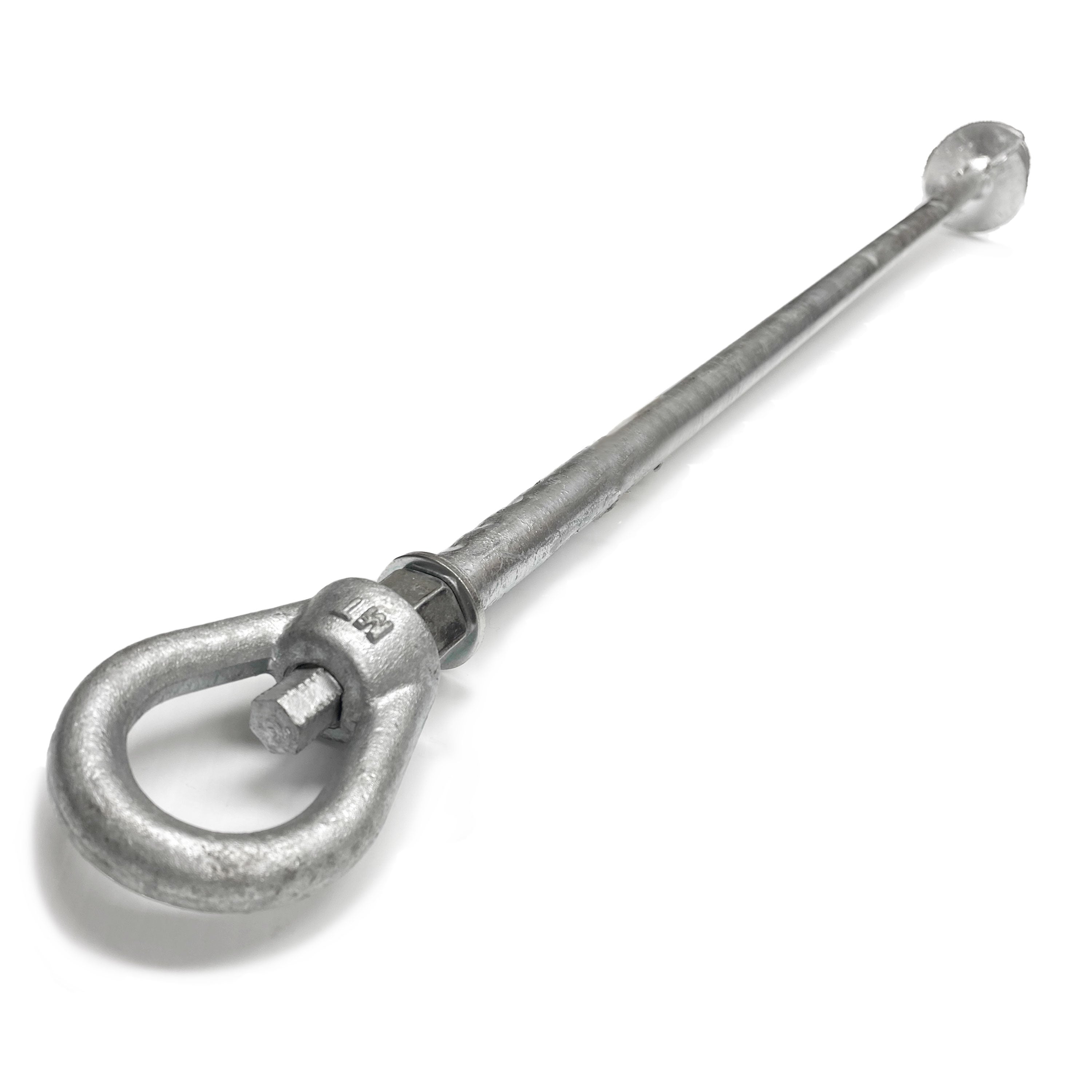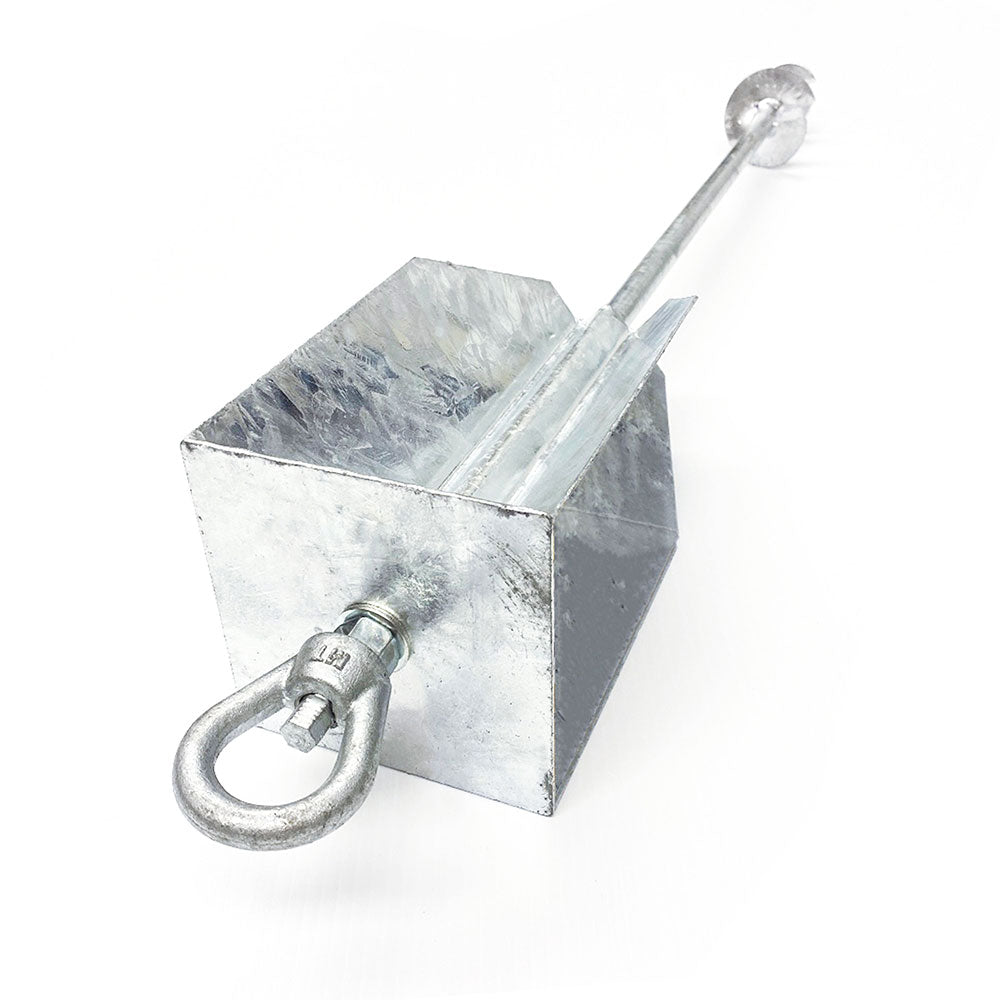Common Mistakes When Using a Ground Anchor for Your Property
Common Mistakes When Using a Ground Anchor for Your Property
Blog Article
Check Out the Various Kinds Of Ground Anchor for Your Next Project
When starting a construction or landscape design task, comprehending the various kinds of ground anchors readily available is essential to guaranteeing both stability and toughness (Ground Anchor). From auger supports, which stand out in diverse dirt problems, to risk supports created for short-lived installations, the alternatives are various. In addition, concrete and screw anchors existing unique benefits in particular circumstances, while deadman supports are customized for applications calling for resistance to side pressures. The selection of a proper anchor type can considerably influence the overall success of your task, prompting more expedition into their respective advantages and applications.

Auger Anchors
Auger anchors are a popular selection in different building and construction and landscaping projects because of their special design and effective anchoring abilities. These anchors contain a helical screw-like shaft that is driven right into the ground, enabling for a protected and steady hold. The spiral design facilitates easy installment and maximizes resistance against lateral forces, making auger supports especially efficient in applications such as secure fencing, short-lived structures, and disintegration control.
The installation procedure of auger anchors is reasonably uncomplicated. Auger anchors can be conveniently gotten rid of and reused, which includes to their cost-effectiveness and sustainability.
One of the substantial advantages of auger anchors is their capacity to disperse tons uniformly across the bordering dirt, minimizing the danger of dirt disruption and reducing environmental impact. In addition, they are much less susceptible to heaving or loosening gradually contrasted to typical anchoring approaches. Subsequently, auger anchors are an excellent choice for jobs calling for reliable and long lasting anchoring solutions.

Risk Anchors
When it pertains to securing structures in a selection of outside applications, risk anchors use a simple and dependable service. These anchors are usually built from sturdy products such as steel or aluminum, developed to stand up to ecological stresses while providing ideal stability. Their easy design permits for fast installment, making them a perfect selection for irreversible or short-term anchoring requirements.
Risk supports are specifically useful in securing tents, canopies, and various other light-weight frameworks against wind and climate. They operate by being driven right into the ground at an angle, producing a solid hold that stands up to pull-out pressures - Ground Anchor. The effectiveness of risk supports depends upon several variables, including dirt type, wetness content, and the angle of setup
For added security, several risk supports include attachment factors for straps or ropes, enabling tension adjustments as essential. In applications such as landscaping or building and construction, they can effectively support devices or frameworks on uneven terrain. In general, stake supports provide a versatile and affordable remedy for safeguarding various outdoor setups, making them a preferred option for specialists and do it yourself fanatics alike.
Concrete Anchors
Concrete supports provide a durable remedy for protecting frameworks to concrete surface areas, making sure security and safety in numerous applications. These supports are necessary for tasks ranging from household constructions to large industrial installations. They are available in different kinds, including development supports, adhesive supports, and undercut supports, each developed for certain lots demands and ecological additional hints conditions.
When mounted,Development anchors count on mechanical devices to hold the concrete. They are ideal for tool to sturdy applications. Glue anchors use high-strength epoxy or material to bond the anchor to the concrete, using exceptional load-bearing capabilities, particularly in cracked concrete situations. Undercut supports create an one-of-a-kind shape within the concrete, providing remarkable holding power, especially in applications where tensile lots are widespread.
When performed appropriately, concrete supports significantly enhance the structural stability of numerous jobs, making them important in contemporary construction practices. Comprehending the details requirements of your task will aid in selecting the ideal type of concrete anchor for the task.
Screw Anchors

Screw anchors are a functional fastening solution that can be efficiently used in a selection of applications where typical concrete supports might not be adequate. These supports are composed of a helical layout that enables them to be easily driven into the ground, making them perfect for use in soil and other substratums. Their unique framework gives excellent holding power and resistance to pull-out forces, making them suitable for countless projects, from landscaping to architectural assistance.
One of the main benefits of screw anchors is their ease of setup. They need minimal tools and can typically be mounted without the need for excavation, which conserves both time and labor costs. Furthermore, screw anchors can be gotten rid of and recycled, providing a lasting service for short-term applications.
Screw supports are particularly advantageous visit homepage in locations where dirt conditions are testing, such as sandy or loosened dirts. Their ability to be installed at varying midsts enables customization based on details job demands. On the whole, screw supports provide a effective and reputable securing method, making them an outstanding option for engineers and service providers seeking efficient options for their jobs.
Deadman Anchors
Deadman anchors serve as a durable option for stabilizing structures in tough problems, particularly where standard securing techniques might fail. These anchors contain large, hefty items hidden underground, which create resistance against lateral pressures. The design normally includes a straight part, such as a block of concrete or a metal plate, hidden in the soil, to which straps or cords are affixed.
The effectiveness of deadman anchors depends on their capacity to distribute lots over a bigger area, minimizing the risk of failure in unsteady dirt problems. They are specifically useful in applications such as keeping wall surfaces, momentary structures, and slope stabilization, where soil activity can endanger the visit their website stability of the framework.
Setup of deadman anchors calls for cautious planning to ensure they are positioned at the appropriate depth and orientation, maximizing their load-bearing capability. While they may need more labor and material than light-weight anchors, their reliability in unfavorable problems makes them vital for lasting jobs. Moreover, deadman supports are flexible and can be adjusted to numerous applications, making them a best selection for designers facing special obstacles in their projects.
Conclusion
Auger anchors stand out in varied soil problems, while stake anchors match short-term applications. For concrete surface areas, growth and glue anchors give reputable choices, and screw anchors provide versatility in tough terrains.
Additionally, concrete and screw anchors existing distinct benefits in specific situations, while deadman supports are customized for applications requiring resistance to lateral forces - Ground Anchor.Auger supports are a preferred choice in different building and construction and landscape design projects due to their unique style and efficient anchoring abilities. They come in various kinds, including growth anchors, adhesive anchors, and undercut supports, each developed for certain lots needs and environmental conditions
Adhesive anchors use high-strength epoxy or material to bond the support to the concrete, providing superior load-bearing capacities, specifically in cracked concrete scenarios. Overall, screw supports give a dependable and effective anchoring technique, making them an exceptional selection for contractors and engineers looking for efficient options for their tasks.
Report this page